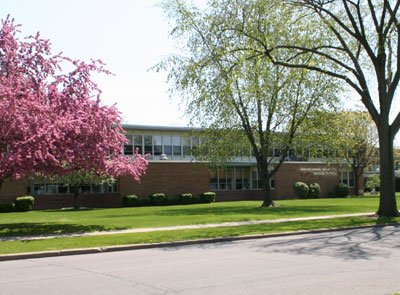Embattled Brownell principal Joseph Di Salvo will be reassigned,
leaving district staff searching for the middle school’s third
principal in as many years. His departure, along with the
resignation of assistant principal Stephen Owens, means the school
will have a new administrative team that could encounter strong
federal sanctions.
Gilroy – Embattled Brownell principal Joseph Di Salvo will be reassigned, leaving district staff searching for the middle school’s third principal in as many years. His departure, along with the resignation of assistant principal Stephen Owens, means the school will have a new administrative team that could encounter strong federal sanctions.
Di Salvo, who has completed one year in the Gilroy Unified School District and as principal of Brownell Middle School, submitted his retirement to the district office Tuesday. He will be principal on special assignment, the duties for which have not been defined, until he leaves Dec. 31.
“We’ll be looking at the total district and saying, ‘Where will he fit best?’ ” said interim superintendent Darrel Taylor.
Di Salvo’s retirement comes three weeks after a group of teachers complained about his management style to the district. However, Di Salvo said staff grumblings did not prompt him to quit California public schools.
“That did not have anything to do with my decision,” he said. “Whenever you begin a new position, you’re going to have teachers not subscribe to the basic philosophy.”
The 55-year-old will realize lifelong aspirations to teach full time at a university as a senior lecturer at Santa Clara University in January 2008. He will instruct new teachers on effective teaching and administrative techniques. Eventually, Di Salvo hopes to be elected to a school board.
“I want to be a strong advocate for public education from the outside,” he said
When hired in 2006, Di Salvo planned to stay at Brownell for at least three years. However, during his first three months, three friends and administrators took jobs with other districts or retired. When about 15 parents accused him of not caring about child safety following student fights on the Brownell campus in the fall and winter, he decided it was time to go.
“It was so a personal affront to me, I made a decision to look at other things,” he said.
Other parents expressed sadness at Di Salvo’s departure.
“I think it’s too bad because he was trying to make some positive changes there and I don’t think he really had enough time probably to implement everything he wanted to do,” said Sue Costa, chairwoman of the Brownell GATE Advisory Committee and parent of triplets who were promoted in June.
Despite some staff complaints, other teachers expressed positive reports of Di Salvo.
“I have been supported by Mr. Di Salvo,” said Phyllis Bartu, Brownell department chair of special education and lead negotiator for the Gilroy Teachers Union. “New people have new ideas and when we had a bump in the road, we talked about it and we worked it out.”
However, at least four teachers, including department heads Charla Mittman and Sam Navarez, said they did not believe Di Salvo was supportive and spoke to interim superintendent Darrel Taylor in early June.
“We felt that that door of being really listened to was being closed or that there was a picking and choosing of who was going to be listened to,” said Navarez, who has been teaching for 29 years and was named district teacher of the year last year. “It may sound petty, but I felt that how we deal with one another develops the type of climate we have at a school. We bring that attitude back into the classroom and it definitely affects kids.”
The remarks mirror those made by teachers at Di Salvo’s last middle school in the Palo Alto Unified School District, from which he resigned under pressure in 2005. Teachers described his management style as “heavily top down,” according to a investigative report produced by a law firm at the Palo Alto district’s behest.
While Di Salvo cited a clash with Palo Alto’s new superintendent as a reason for leaving, he acknowledged there were clashes with staff.
“Sometimes when you’re a leader, you’ve got to make unpopular decisions,” he said.
Navarez, who along with Mittman will transfer this fall to the Gilroy Early College Academy, understood Di Salvo’s reasoning.
“I really don’t want to leave, but maybe I’m also a stumbling block,” Navarez said. “Maybe I’m one of the people that’s butting heads with what might be good.”
Di Salvo faced several hurdles as a first-year principal. He replaced longtime Gilroy educator Suzanne Damm, who was well liked by teachers, and was suspected of being charged by the district to get rid of employees that were outspoken about district policies. In addition, Brownell was in its second year of program improvement – a term for schools that have not met federal testing expectations for at least two consecutive years – when he assumed the helm.
“I think it would have been tough for anybody coming in,” said trustee Denise Apuzzo, whose daughter was promoted from Brownell in June.
The middle school could enter into its third year of program improvement in September if May test scores do not pass muster. This could present a challenge for the new principal, especially as federal law requires that district enact drastic changes, such as replacing all staff or reopening as a charter school, when schools are in their fourth year of program improvement. This challenge could be compounded by the assistant principal being new to the position and the departure of veteran educators, such as Navarez and Mittman.
The future of the school depends on its next head, which the district hopes to hire by the end of July, Taylor said.
“It depends on how the person comes in and the kind of qualities that person has,” he said. “It could be a very smooth entry or a very rough entry. We’re going to be very particular.”













